You are utterly unique. There is nobody like you in the entire world, or probably even in the whole universe, unless you are an identical twin. And identical twins comprise just 0.2 percent of the world population, or roughly 14 million people.
But there are an estimated 140 to 200 million twins when we include those who are not identical (thus remaining unique), but share a birth partner in a fraternal twin. The term fraternal twin is the common term for a dizygotic twin, which occurs when two eggs are released and fertilized allowing for two separate children to be carried at once. This differs from identical twins, which start off as a single fertilized egg and split apart into separate embryos during the first couple weeks after fertilization.
Fraternal twins are ten times more common than identical twins, and this ratio also allows for pairs that might not immediately be thought of when the word “twins” is uttered. Obviously, there can be male and female fraternal twins (usually 50 percent of fraternal twins), but there can also be twins with wildly different features, marked differences in identity, and in some relatively unlikely cases, completely different racial appearances.
If the parents are extremely different – African and Caucasian or Asian and South American for example – it is possible for each of the fraternal twins to take after only one parent, not appearing to be a result of both, even though they are technically multi-racial. This is due to the lottery called DNA that occurs when organisms reproduce; offspring can appear fundamentally different even when their makeup is technically the same or similar. They can share huge portions of DNA and yet appear to be born of entirely different parents.
The same but different
Such twins are just the product of natural processes that randomly sample DNA to make an entirely new being. And yet, there are scientists who actively attempt to harness that randomness to be able to create new things from old DNA.
There are also watchmakers trying to harness old techniques and technologies and merge them with new concepts to create spectacularly fresh ideas. (Nice segue, right?) And sometimes, those watchmakers come up with something that appears to come straight out of a medical textbook. Like a mainspring that’s not a mainspring, even though it’s a mainspring.
It’s the same even though it’s different. The example I’m thinking of comes from an incredible timepiece by Breguet, the 7077 La Tradition Independent Chronograph. It’s all kinds of different.
As the name implies, the 7077 has a chronograph gear train independent of the going train, which is even powered by its own spring. That is where simplicity ends and awesovation begins: the spring for the chronograph is not like the mainspring, instead it is more akin to a click spring or a retrograde return spring, basically a big blade. A blade-style spring has high power and a short distance of motion. This has some benefits and some drawbacks, which we will get into, but the real innovation is that it was used at all in a modern chronograph.
Most chronograph connoisseurs are in search of the most accurate, longest-running, and best-integrated chronographs, but for a Breguet La Tradition, any exception can be made. Breguet decided to go with something interesting, unique, and relatively easy to isolate so as to ensure chronometric performance.
The time-only gear train stays self-contained and running smoothly no matter how many times the chronograph is operated because there is no physical connection between the two mechanisms.
And yet they are twins of sorts: not identical, but fraternal, individual in their own ways but born from the same womb, um, I mean case.
Twins only in name
The gear trains are truly different when examined, due mostly to the fact that they are designed to do two very different things. The time gear train does what watches have always done: keep accurate time. But the chronograph is another story.
First off, it’s a twenty-minute chronograph, a result of the blade mainspring that powers it. Since it is not a long, sinewy mainspring but instead a short and stout powerhouse of steel, it can’t keep that little guy running for hours and hours. It is used for short timing purposes, much like the majority of chronographs (if I’m honest, the only time mine goes for more than a few minutes is when I simply forget to stop it).
That short length of power, however, makes for fast winding; essentially, instantaneous. The blade goes from spent to fully charged (since it doesn’t wind) when the chronograph reset button is pushed. That’s right, pushing the reset button charges the chronograph spring. While resetting the mechanism, the blade spring is locked into a fully charged state, ready for immediate use the next time. So, in reality, you never even need to wind it, just use it.
But with every upside there is a downside. The downside to such a short period of power comes in the form of a rather sharp torque curve. Modern mainsprings have very long and flat torque curves for even power distribution throughout the power reserve; this spring, on the other hand, just wants to push. It acts even more drastically than historic mainsprings, which needed a fusée or constant force mechanism to even out the power band. So that means that this spring needs something like that too.
No need to be normal
What Breguet decided to do to alleviate this technical conundrum is make the initial gears in the chronograph gear train non-concentric, meaning that they act as a fusée or snail cam with a gradually changing ratio to counteract the loss of power over time. This allows for a (relatively) straightforward solution without relying on complicated systems to dole out power in tiny increments. And they would need to be tiny increments due to the balance frequency.
It’s at this point I should probably mention that there are twin (again, fraternal) balance wheels in this watch, since there are two completely separate gear trains. The time-only gear train balance has a somewhat leisurely rate of 3 Hz or 21,600 vph, but the “little-engine-that-could” chronograph balance is made from titanium and clocks a brisker 5 Hz or 36,000 vph frequency, even though it is the same size as the traditional balance, making sure that even and precise measurement can be had from the short-term chronograph.
To top off the search for precision in such an atypical chronograph movement, the ultra-light titanium balance is stopped via two “brakes” at its highest point in amplitude when the stop pusher is activated. This allows for the instantaneous stopping and starting of the purpose-driven balance by ensuring the amplitude will be reached immediately instead of needing to build up to a useful rate.
For all of these reasons, the chronograph portion of the La Tradition 7077 is inspiring, not because Breguet looks like a traditionalist in every sense of the word and this movement is anything but traditional, but because it shows a continued desire by Breguet to push the boundaries of watchmaking and to stay curious and explorative about ideas.
When you combine that portion of the movement with what else is presented, you can’t help but gape at the engineering prowess of the team behind these ideas and their ability to make it seem cohesive and uniform. The stylistic decisions are classic Breguet with the simple La Tradition-style bridges and cocks, the blasted and chamfered surfaces, the perfect guilloche dial, and the overall symmetry of a balanced layout.
Breguet even threw in a power reserve to keep track of the time-only side of things, making the watch pretty good at covering all horological and style bases. The open layout allows for dramatic depth while you sit there scratching your head trying to figure out just exactly how this blade spring works.
If you ask me, I would say that the La Tradition 7077 Independent Chronograph is the most surprising and completely incredible set of fraternal twins I have ever seen. Along with the other new La Tradition pieces, the 7077 stands out at the forefront of current and emerging ideas in the watch world. I anxiously await the next great ideas!
Until I see those, I guess I’ll have to settle on breaking this guy down!
• Wowza Factor * 9.3 Serious wowza factor on this one, it almost makes me feel guilty for looking at other watches because this is one you go steady with.
• Late Night Lust Appeal * 85.6 g’s » 839.449m/s2 Serious lust for this piece! Brand provenance, movement geekisms, and one-of-a-kind ideas put together with tradition in mind.
• M.G.R. * 69.68 Major movement here, technically it is twins living under the same crystal. Bonus points for that!
• Added-Functionitis * Serious Truly unique, instantaneous twenty-minute chronograph plus that ever-faithful power reserve sounds like a prescription of maximum strength with codeine Gotta-HAVE-That cream for this uniquely large swelling.
• Ouch Outline * 10.25 – Cutting the tip of your ear while trimming your hair! Hey, it happens! The broke and the frugal know this pain, as do the simply uncoordinated. But for this watch, I might let it happen multiple times.
• Mermaid Moment * Spring Blade! Just the feeling you get from such a simply complicated chronograph movement makes you want to try on tuxedos!
• Awesome Total * 642 Add the caliber number (580) to the number of jewels in the movement (62) for a seriously awesome total!
For more information, please visit www.breguet.com.
Quick Facts
Case: 44 x 13.95 mm, white or red gold
Movement: manually wound Caliber 580DR with dual gear trains and mainsprings
Functions: hours, minutes: power reserve, chronograph
Price: 77,000 Swiss francs / $78,900 and 77,800 Swiss francs / $79,700 for red gold and white gold respectively

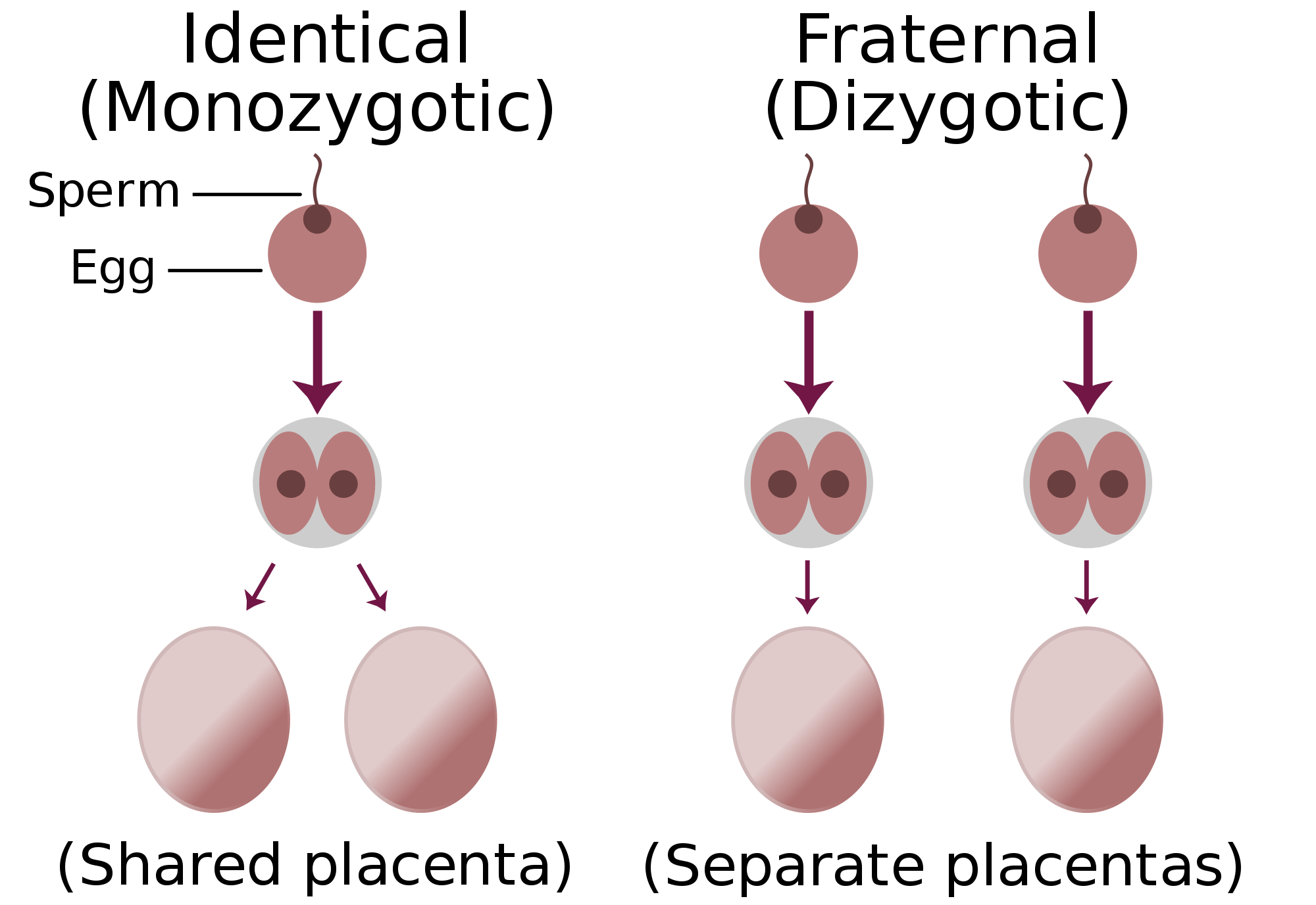
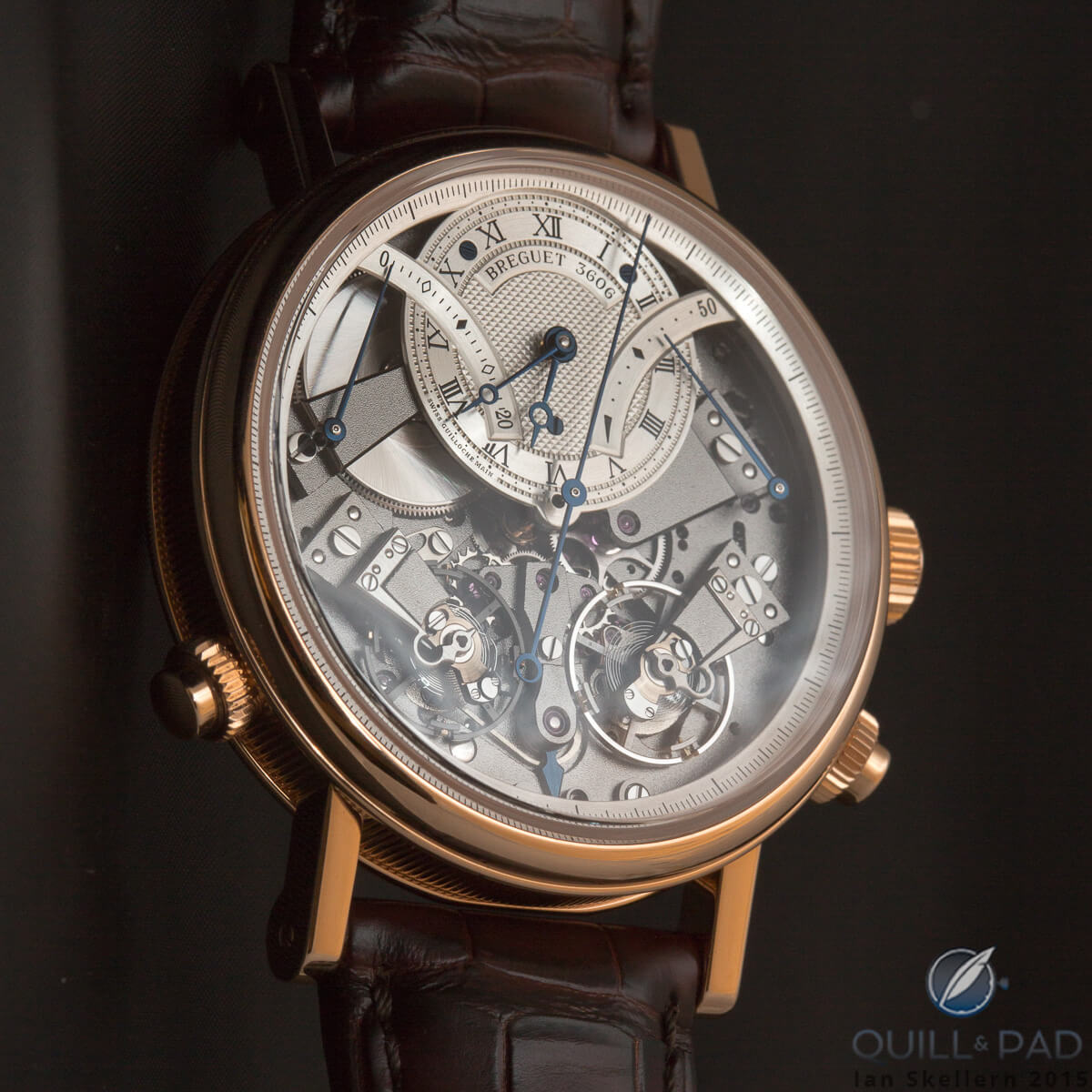
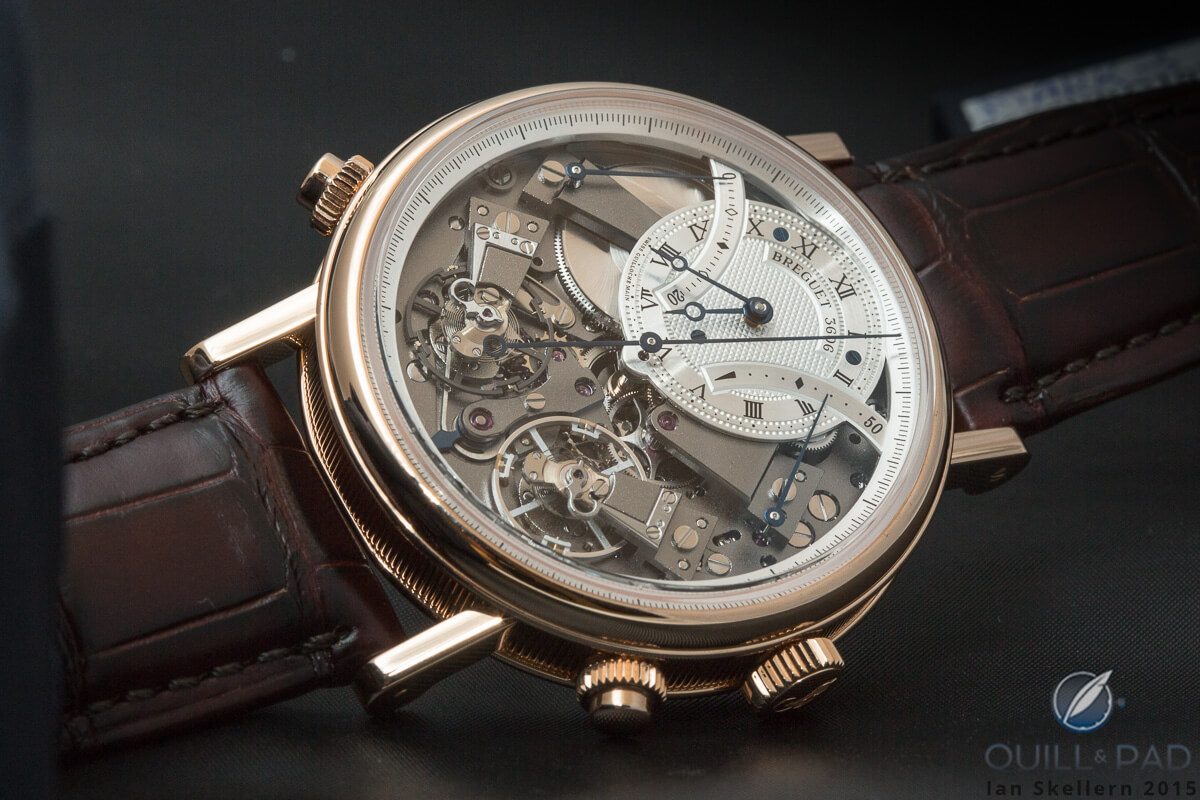
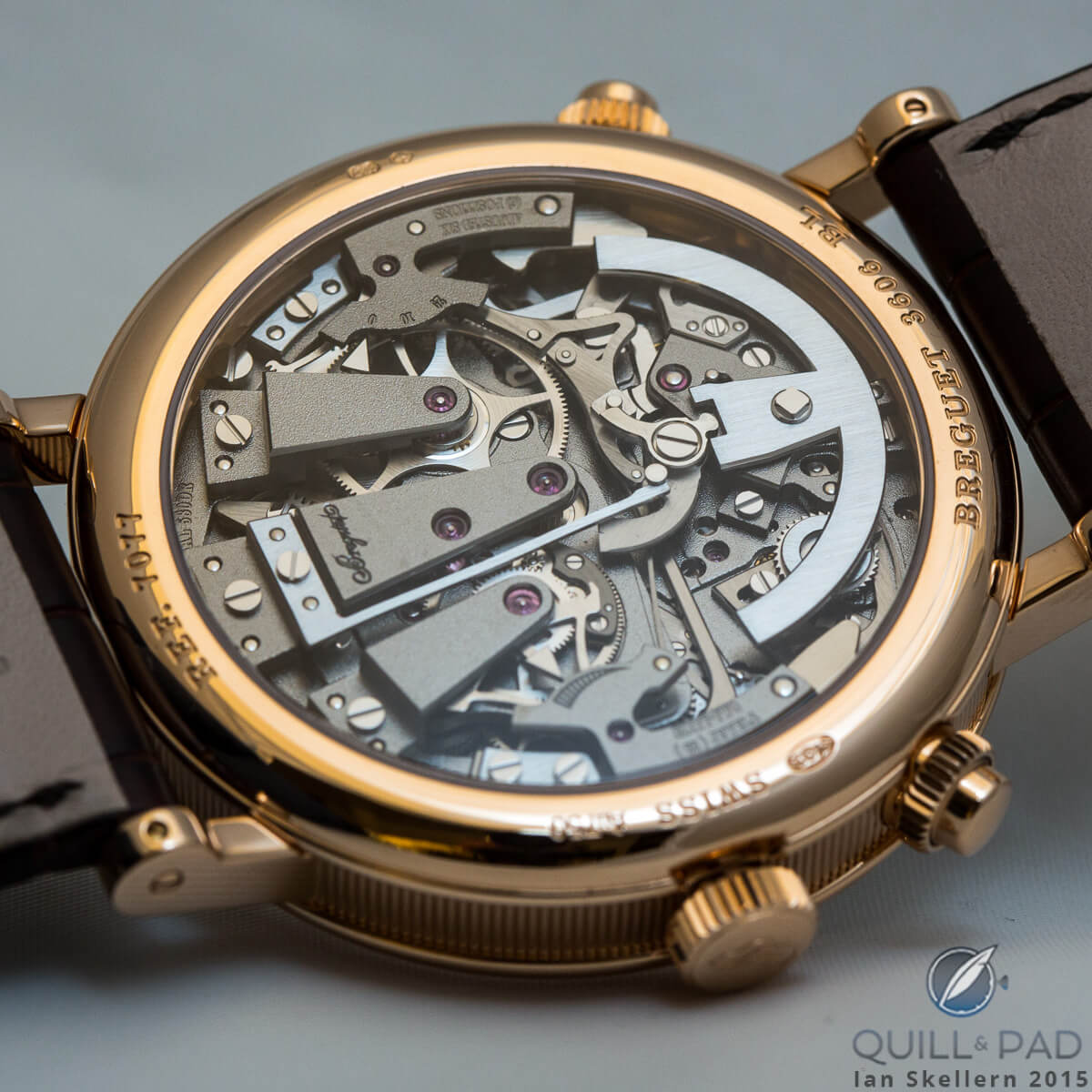
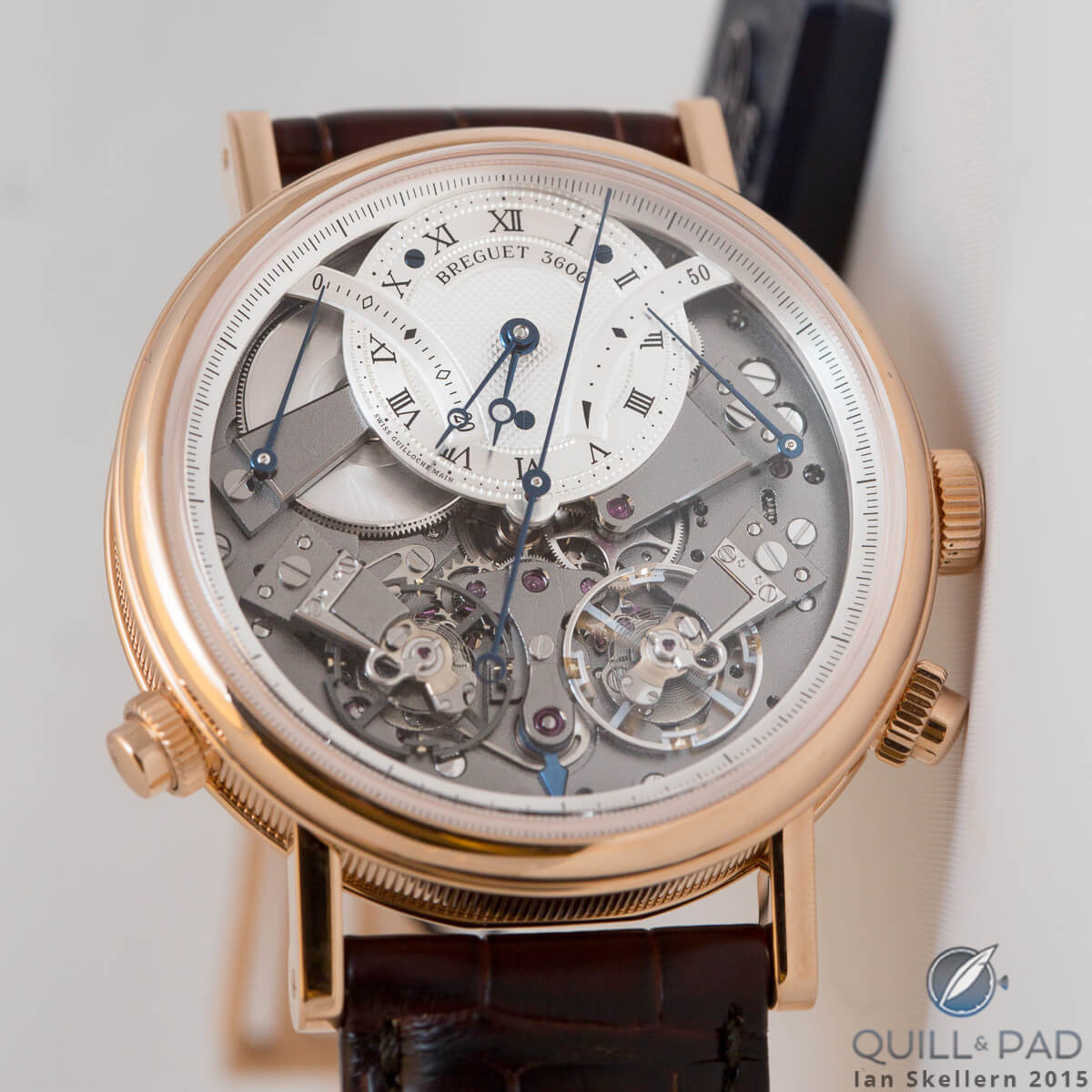
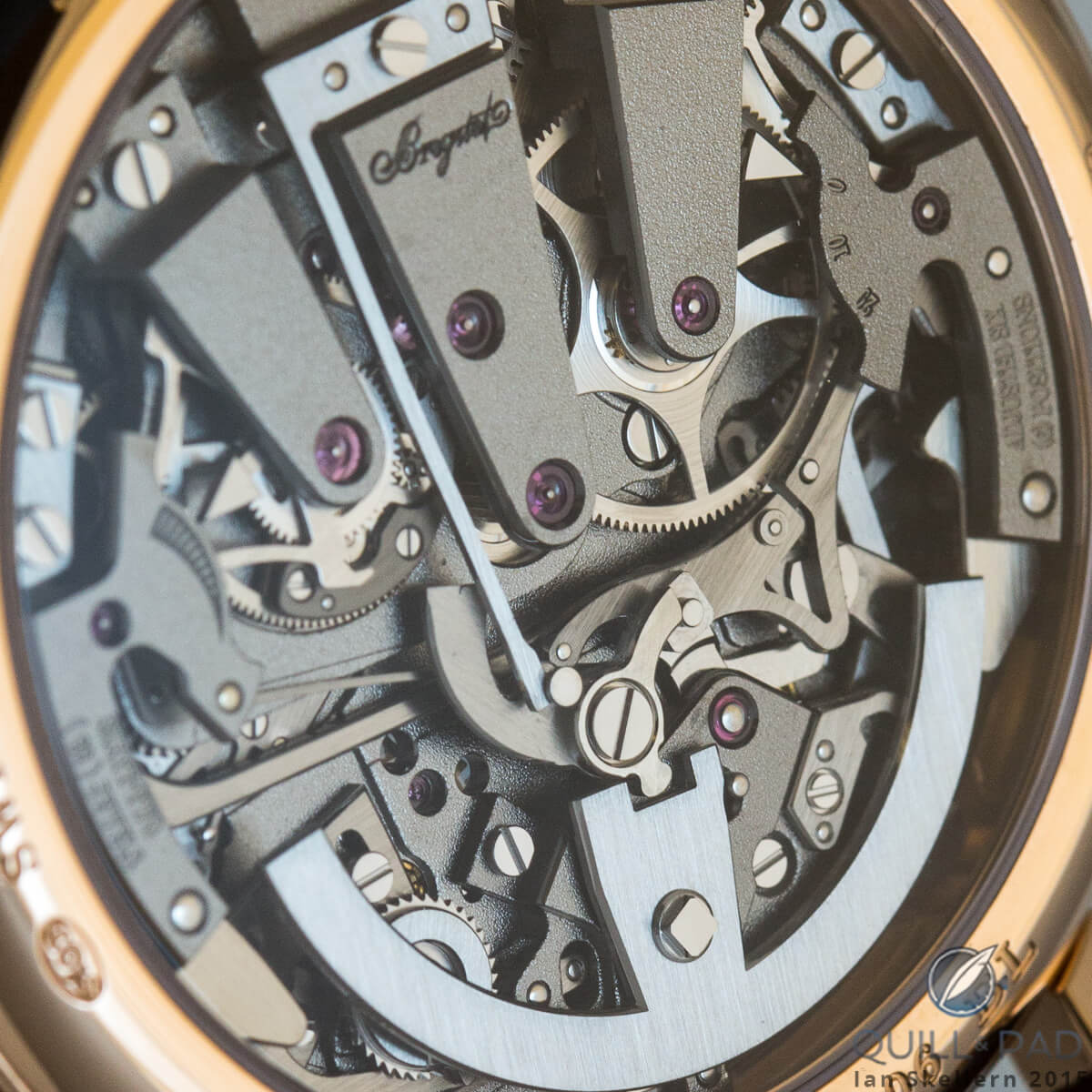
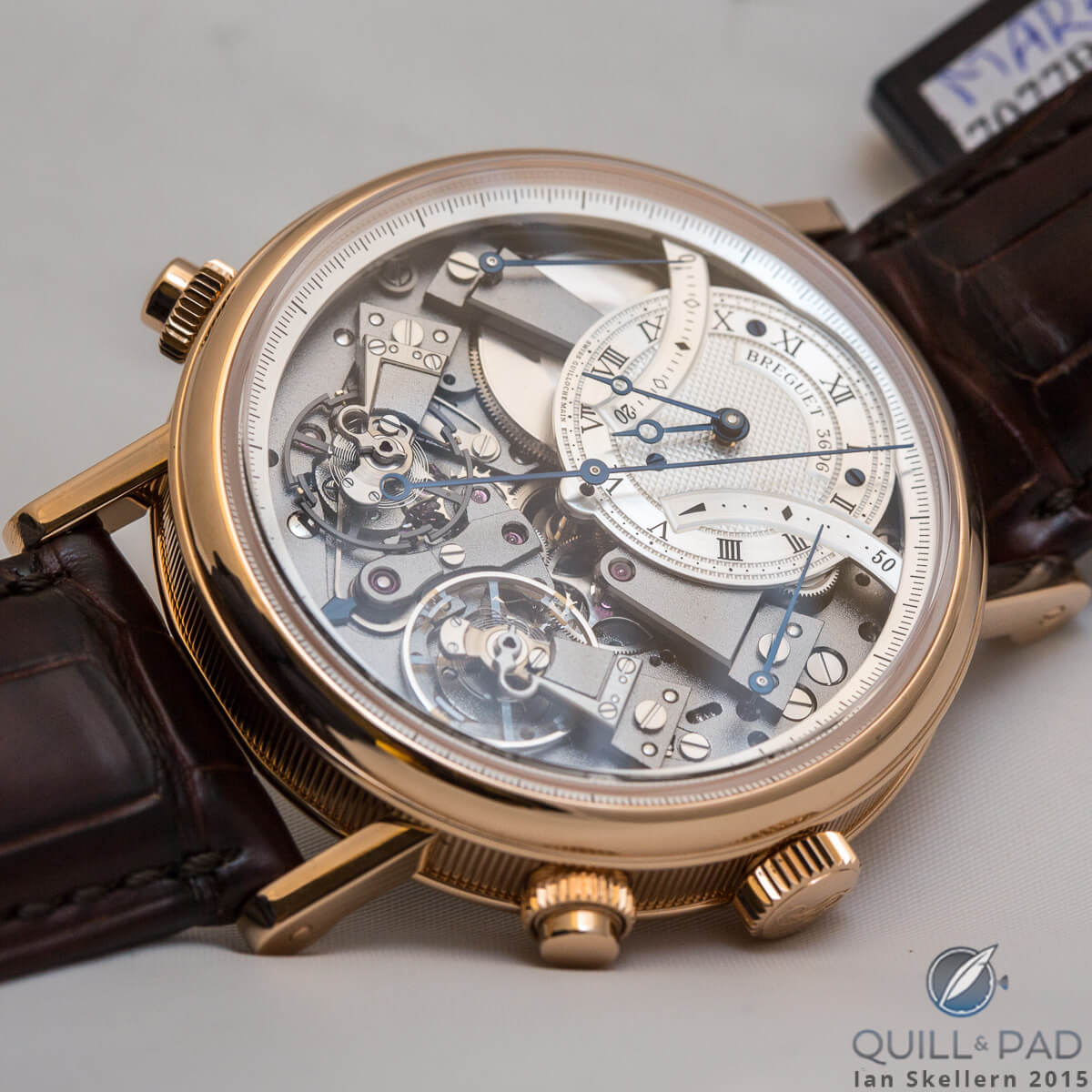
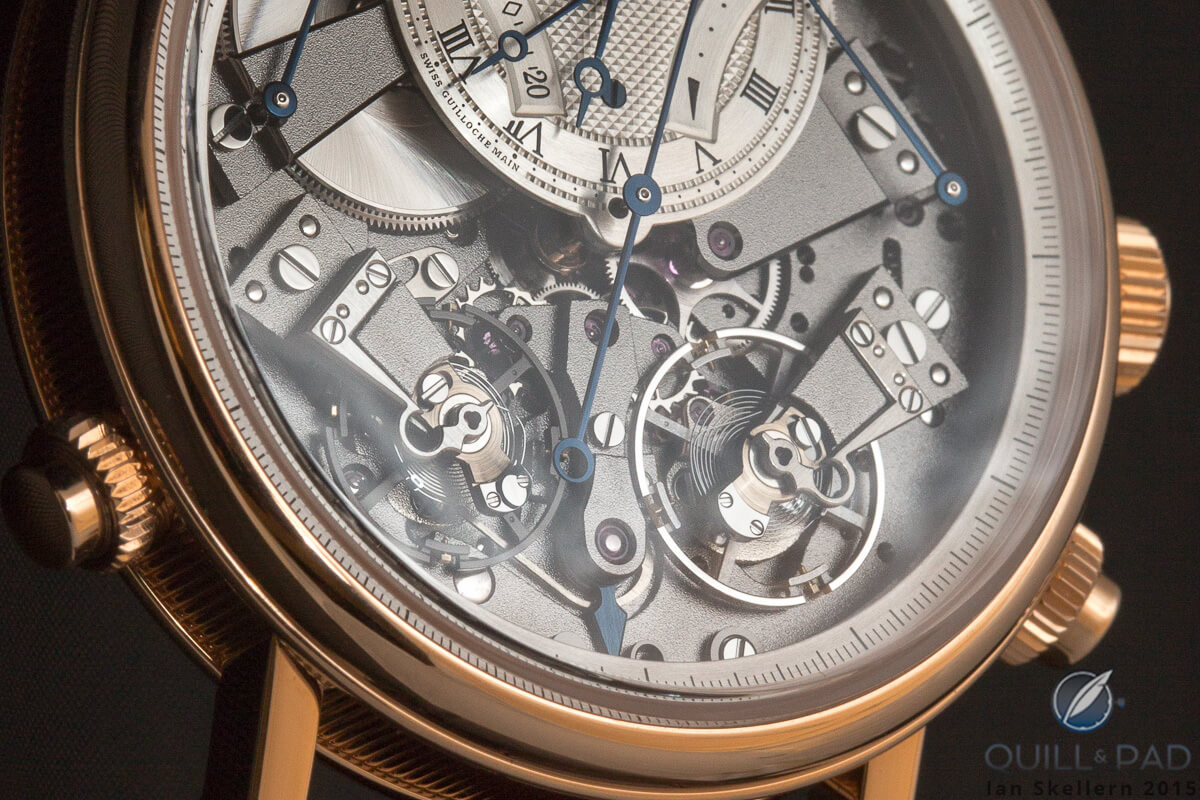
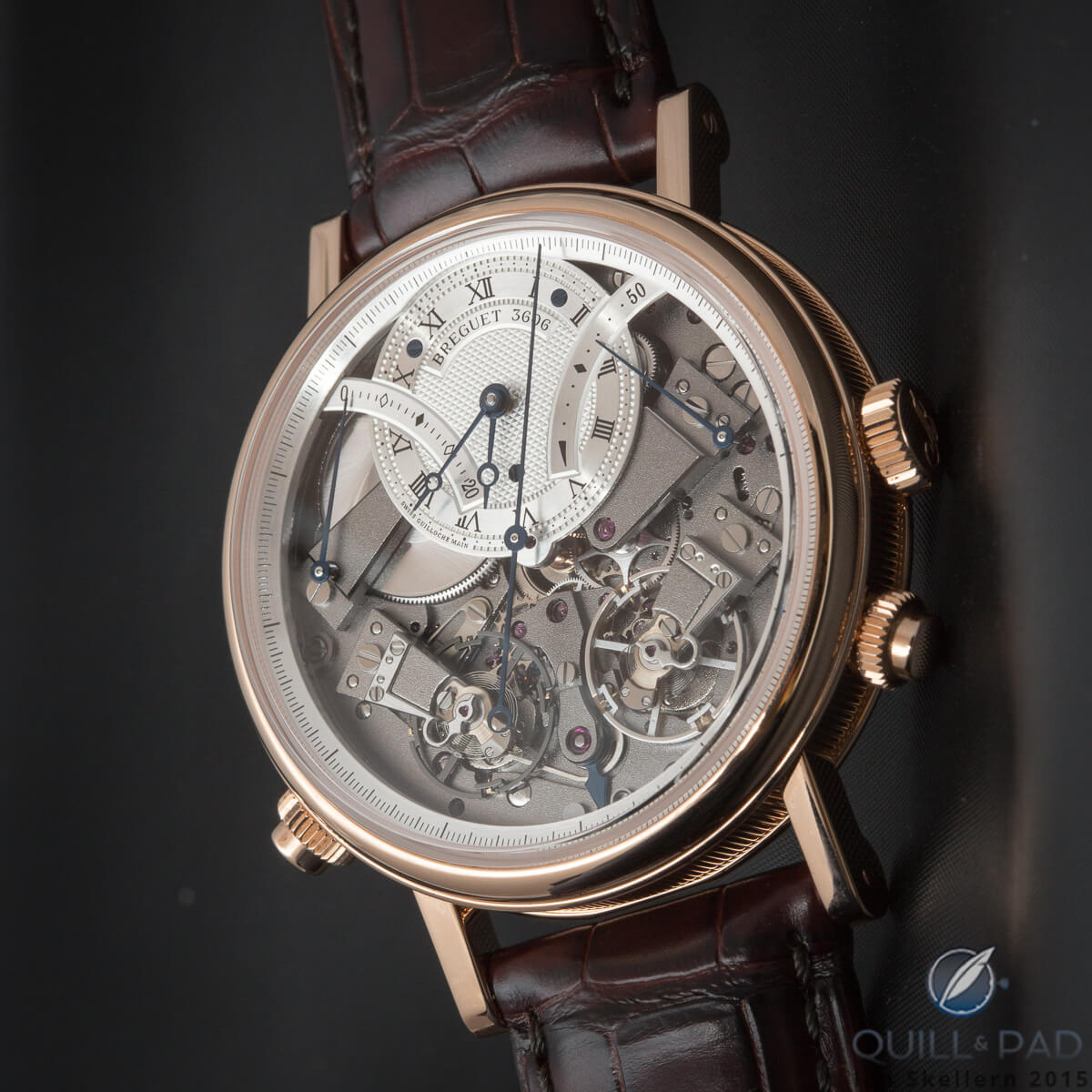
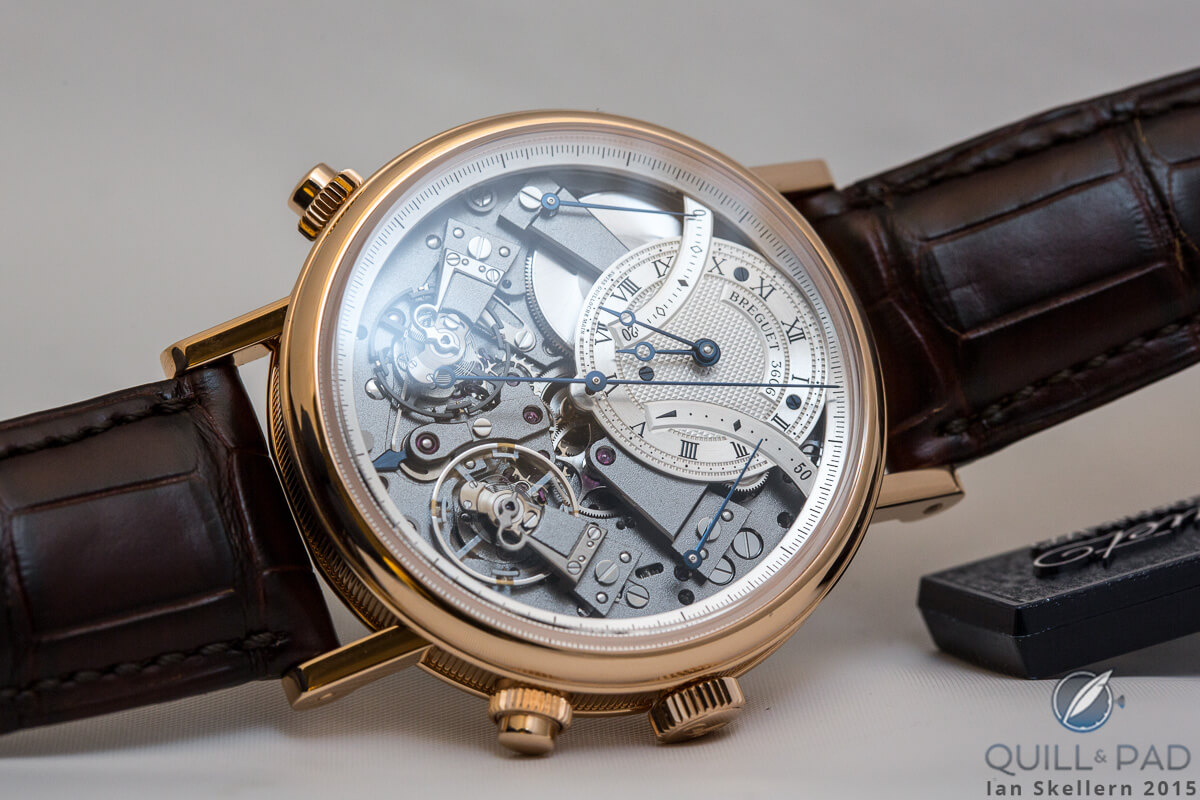
Trackbacks & Pingbacks
[…] This is why you will often see independent balance wheels and escapements set aside for the running of a high-precision chronograph, while a more traditional set is used for the timekeeping gear train as evidenced by the TAG Heuer Mikro range of chronographs and the Breguet Reference 7077 (see Breguet La Tradition 7077 Independent Chronograph: Twins Or Not?). […]
Leave a Reply
Want to join the discussion?Feel free to contribute!